A Better Approach to Reduce Drunk Driving
“Gasoline and alcohol don’t mix,” says the American slogan. Of course they do. Our urban planners mix them all the time and in great doses. See the zoning codes for confirmation. – Ray Olderburg, The Great Good Place
As a society we say “don’t drink and drive” but in this case actions speak louder than words. Zoning and land use policies have an impact on the built environment that often promotes driving and limits other transportation options. These regulations to some extent mandate how we get home from work and unfortunately how we get from the tavern, home. Many regulations are involved in this problem but with adjustments to the three below a real reduction in drunk driving can be promoted.
- Minimum parking requirements for bars and taverns
- Zoning that insures separate land uses
- Zoning that promotes low population density and discourages mass transit
In most communities throughout the U.S. minimum parking requirements exist for various land uses. Unfortunately these minimum parking requirements encourage automobile travel and even extend to taverns. For example, Franklin, Wisconsin’s Unified Development Ordinance: Zoning, Development and Land Division requirements show, in the table on page 254, the parking requirements for various land uses including bars or taverns.
| Use | Minimum Required Parking Spaces per 1,000 Square Feet of Floor Area | Other Required Standard(s) for Off-Street Parking Spaces |
| Bar or Tavern | 10 | Or 1 space per 2 seats or stools, plus 1 space per employee, whichever is greater |
Clearly this indicates that a significant number of patrons have the expectation of driving to a bar or tavern and that this is an acceptable practice. Not only does this set the expectation of available parking but it goes a step further and actually encourages people to drive because they know a space will be available. If parking were limited this could encourage other modes of transportation such as walking, mass transit, or cab service to become the preferred method and thus reduce the number of drunk drivers.
Many zoning regulations came out of the efforts to separate polluted industrial factories from residential homes but unfortunately this was just the start of separating uses. The separation of uses has spread to the point that now in many communities it is illegal to have a store or a tavern in the neighborhood. Without the corner tavern that is accessible by foot, or by mass transit then people have little choice but to drive. This has added to our long run increase of the number of vehicle miles traveled and although the Alcohol-Related Fatalities and Fatality Rates by State report put out by the National Highway Transportation Safety Administration points out that the number of fatalities per vehicle miles driven has dropped we can do more.
Alcohol-related traffic fatalities per vehicle miles driven has also dropped dramatically — from 1.64 deaths per 100 million miles traveled in 1982 down to 0.56 in 2005 (the latest year for which such statistics are available).
Similar to the problems created by the separation of land uses, zoning for low density development encourages people to drive by making the distances between home and destination further apart. The report Urban Sprawl and Public Health, put out by the Department of Environmental and Occupational Health at the Rollins School of Public Health of Emory University, makes the connection between density, the availability of mass transit, and automobile fatality rates.
The NHTSA data do permit comparison of automobile fatality rates by city. In general, denser cities with more extensive public transportation systems have lower automobile fatality rates (including drivers and passengers but excluding pedestrians): 2.65 per 100,000 population in New York, 6.98 in Philadelphia, 5.57 in Chicago, 2.54 in San Francisco, and 4.17 in Portland, compared to 9.97 in Houston, 12.55 in Phoenix, 11.53 in Dallas, 10.65 in Tampa, and 11.21 in Atlanta.
Although these numbers attest to all automobile fatality rates the connection between density, access to mass transit, and automobile fatalities is apparent. By increasing population density and providing a variety of mass transit options people have choices of how to travel to their destination of choice. Further by having a higher population density this generally supports the availability of entertainment options nearby and again allows for people to make better transportation choices when drinking.
I’ve touched on just a few of the zoning regulations that promote drunk driving and alluded to the solution. The solution I propose can be called Smart Growth, New Urbanism, Urbanism or just plain old city living but all of these refer to one essential idea. The idea of creating neighborhoods where you can live, work, and play. Essentially we need to get people out of their cars before they get to the tavern. To be clear I’m not arguing that city living will be the end of drunk driving. But when we legislate that you drive to the bar and when we build the physical environment so that people are encouraged to drive to the tavern, then the end result will be drunk drivers. So if we want to change this outcome and combat drunk driving we need to begin by changing our regulations to encourage dense, walkable, mixed-use neighborhoods.
Car Culture
-
It’s PARK(ing) Day, Let the Celebration Begin
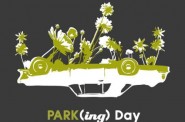 Sep 20th, 2013 by Jeramey Jannene
Sep 20th, 2013 by Jeramey Jannene
-
Why WisDOT Is Behind the Times
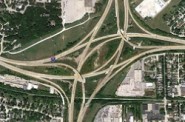 Jun 12th, 2013 by Dave Reid
Jun 12th, 2013 by Dave Reid
-
Walker’s Massive Borrowing Scheme
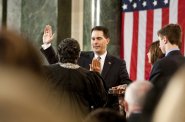 Feb 19th, 2013 by Dave Reid
Feb 19th, 2013 by Dave Reid









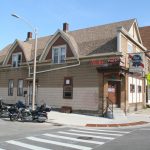





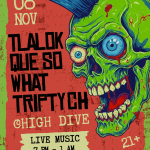
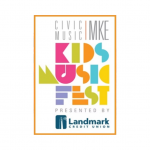




The irony of drinking establishments surrounded by parking has occurred to me many times but I’ve never put that into a good compelling argument like this one. Brilliantly written.
They should take all the tax money collected from alcohol, as well as the fines from DUIs,and buy people free cab rides home from bars with the money. Wouldn’t work in rural areas but it wouldin metro areas.
@JoeW Thanks. yea it’s just crazy…
@Dog G Interesting though there would never be enough cabs in Milwaukee to do this.
Don G: It actually would more than pay for the cost of cabs…likely even limos. Project Road Crew–which utilizes no govt funds–provides limo rides TO AND FROM bars in multiple counties in Wisconsin and lowered drunk driving by 17% in one year. And, if you consider that it costs an average of $65k to clean up after a drunk driving accident, you would think they would find the $20-50 for the cab ride home…
This is a really interesting topic that doesn’t get that much discussion among planners at all. That quote on minimum parking requirements for bars really hit the point home for me. What are they thinking?
@Daniel First good blog! Yea if you look into zoning laws you’ll see all sorts of weird minimum parking requirements for various uses, and of course the taverns ones stand out as the scariest. I’d say they are not thinking.
This is one way of looking at the situation.
I used to make fun of some south side locations (Cudahy, St. Francis, etc.), for the number of random bars they had in the middle of their neighborhoods. But really, they’re just on to something.
@ally Like I said before don’t get me wrong, part of the problem is well people. I’ve had way to many friends drive drunk, some who have ended up in jail or accidents. But to try to stop them from driving is like taking away their “freedom”.. nearly impossible. irks me take a cub, walk, bus or crash at a friends but don’t drive.